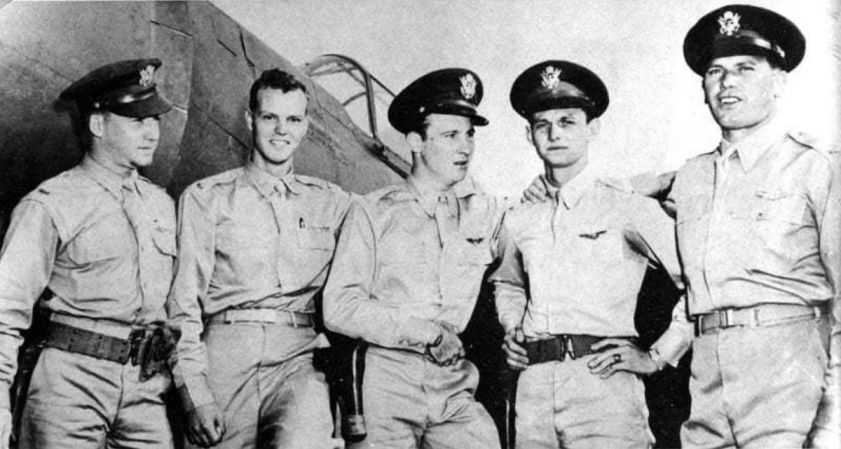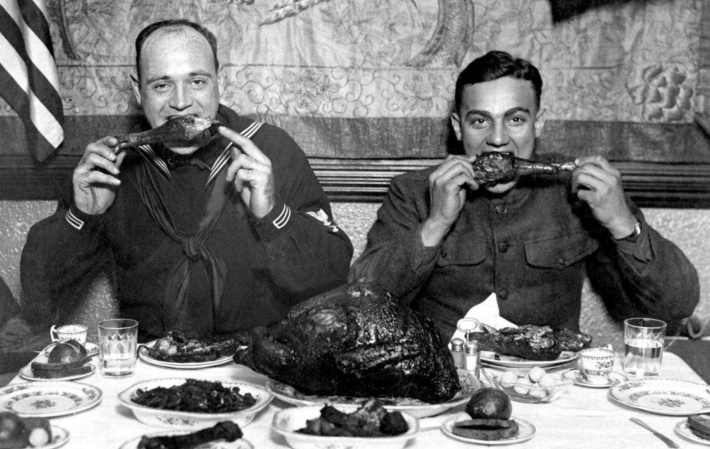So, after sitting through weeks of military transition classes, you’ve decided, “screw it! I’ll just turn to a life of crime!” Congrats! You’re joining a long tradition — a tradition mostly limited to privateers in the 17th and 18th centuries, sure, but a tradition nonetheless.
So, how about piracy? It’s glamorous, it’s profitable, and it’s exciting (also brutal, uncomfortable, and morally repugnant — but don’t get wound around the axle). Here are seven awesome pirates and their crews who turned their seafaring skills into fun, usually short careers in sea vessel re-appropriation:

The face of a blacksmith who will absolutely start a crime syndicate and use it to topple an empire.
French Pirate King and American hero Jean Lafitte
Jean Lafitte was a French blacksmith who expanded his business into smuggling and piracy until he, his brother, and their men controlled a fleet in Barataria Bay, Louisiana, that was stronger than anything the U.S. Navy had in the area. During the War of 1812, Great Britain decided that it would be way easier to buy their way into New Orleans through him than fight for it.
So they offered him ,000 and a captaincy to help them, but he apparently loved America and told Louisiana instead. Authorities didn’t believe him and imprisoned him until then-Gen. Andrew Jackson pointed out that the British would totally do that. Lafitte and his men fought on Jackson’s side during the Battle of New Orleans and were granted full pardons. They later returned to piracy, focusing on Spanish ships because screw those guys.

Madame Cheng was known for her *ahem* humble roots and her ability to cut your fleet to shreds, fool.
The prostitute pirate Madame Cheng
Cheng was a pirate king looking for love when he fell in with a prostitute and married her. She took the name Cheng I Sao and, when her husband died in 1807, turned his pirate fleet from a successful operation into possibly the largest pirate fleet in history. She overhauled the command structure and rule of law in the fleet, captured vessel after vessel, and made enemies of every European power in China at the time.
But when the Chinese Navy came to stop her, she stomped them so hard that the Chinese military was crippled. They then allied with the Portuguese and British fleets to come after her again, and she stomped them so hard that she ended the battle with more ships and men than she started it with. Finally, China offered her an amnesty and noble title to end the fighting.

Captain Bart Roberts captured 400 ships, including one filled with the Portuguese king’s personal jewels from the middle of a 44-ship fleet.
Black Bart’s buccaneers on the Royal Fortune
Black Bart was born John Roberts (and likely was never called Black Bart while he was still alive). He was forced into piracy in 1719, but was so good at navigation and assessing enemy ships strengths that he was elected commander only six weeks later when the captain was killed.
His flagship was generally named Royal Fortune, and the crews of his ships did very well for themselves when they weren’t attempting to mutiny. Bart’s crews once stole the best ship out of the Portuguese treasure fleet of 44 ships, including two man-of-wars. Onboard were 40,000 gold coins and a cross covered in diamonds destined for the King of Portugal. Black Bart and his men stole another 400 ships during their short career from 1719 to 1722.
Unfortunately, Bart pushed it too far, constantly pushing off his retirement until a British man-of-war forced the issue with grapeshot through his neck.

Benjamin Hornigold was known for his antics as well as his fuzzy features and thin ankles.
(Public Domain)
Blackbeard’s mentor, Benjamin Hornigold
Benjamin Hornigold began his pirate career in 1713 as the head of a small gang of men in canoes, but he quickly built up a fortune and a fleet, eventually leading 350 men in the 30-gun Ranger, possibly the most heavily armed ship in the Bahamas in 1717. In one awesome incident, they stopped a merchant ship and boarded it. Instead of stealing the cargo and ship, though, they said that they had all lost their hats the night before and needed to take the crew’s.
But his men were annoyed that Hornigold never allowed them to attack British ships, so they mutinied. Hornigold fled to Jamaica and received the king’s pardon for his piracy, then became a pirate hunter. No honor among thieves.

Henry Every stands on shore while his ship fights an enemy vessel. Not sure why Every is waving his sword around while hundreds of meters from any action, but whatever.
Henry Every and the Fancy’s successful retirement
Henry Every began his life at sea as a boy and, by 1693, he was an experienced seaman. He took a slot as first mate on a privateer vessel named Charles II. But the vessel sat in port for months and the crew went without pay, so Every stole that ship and renamed it the Fancy.
And the Fancy had a stunning career. Every led the crew to the coast of Africa where they preyed on European merchant vessels and put together a fleet of pirate ships that stole the flagship of India’s Grand Mughal as well as 325,000 British pounds in gold and silver. Then, he cleverly retired. Few of his men faced justice and the rest disappeared wealthy.

Capt. Jack Rackham got his nickname, “Calico Jack,” for his wardrobe. You’d think the fact that he helped a woman escape from prison and potentially got her pregnant while she was on his crew would be what he was known for, but nope. Calico.
(George S. Harris Sons)
Calico Jack Rackham
John Rackham was known for his calico clothing and for stealing the Ranger from then-Captain Charles Vane. He used the Ranger to plunder a series of merchant vessels, but then took the King’s pardon for a seemingly peaceful life. A peaceful life that involved an affair with the wife of a pirate informant. And then he voided his pardon to break said wife out of jail, and they started a new pirate crew and ship.
Rackham had another few months of successful piracy but then partied a little too hard. Capt. Jonathan Barnet was sent to capture Rackham and found him and most of his crew too drunk to defend themselves. Rackham was executed, but the two women in his crew, the aforementioned informant wife, Anne Bonny, and another woman, Mary Read, were pregnant and allowed to live.

William Kidd, pimp and traitor
William Kidd and his motley traitors
William Kidd was commissioned as a privateer, and he and his men were sent to the West Indies in 1696 where it didn’t go well. They couldn’t find good targets, so, in 1697, they went to Madagascar and started preying on Indian vessels. Then, in 1698, they spotted the Quedagh Merchant, a 500-ton ship loaded with treasures.
Kidd and his crew stole it, making off with a massive boatload of gold, silk, spices, and other goods. Unfortunately for them, one of the owners of the ship was a senior member of the Indian government and put pressure on the English government to turn Kidd over. Kidd tried to escape to America, but he was caught, bundled to England, and hanged on May 23, 1701.


















